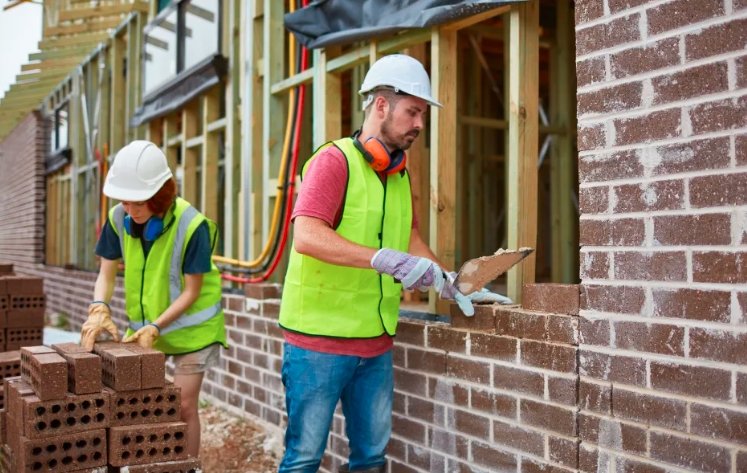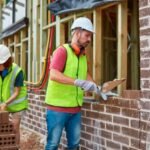Scotland’s housing emergency shows no signs of easing, with experts warning that the situation has deteriorated further since the Covid pandemic. John Mills, head of housing at Fife Council and co-chair of the Association of Local Authority Chief Housing Officers, stated on a recent broadcast that demand for homes has surged due to rising relationship breakdowns, putting immense pressure on an already broken system.
Expert Highlights Broken System
John Mills delivered a clear message during his appearance on a national program. He explained that homelessness was already climbing before the pandemic hit in 2020, but conditions have only worsened since then.
Mills pointed out several factors at play. The cost of living crisis and high construction costs have slowed down efforts to build new homes. He noted that local authorities like those in Glasgow and Edinburgh face even tougher challenges compared to Fife, where some small improvements have appeared.
In his view, the housing system across Scotland needs urgent fixes. Mills stressed that quick solutions do not exist, and a long-term approach is essential to turn things around.
He also mentioned that the private rental market adds to the strain, as more people seek help from councils when they can no longer afford or find private options.

Key Causes Driving the Emergency
The roots of this crisis run deep, with multiple issues combining to create a perfect storm. Relationship breakdowns stand out as the top reason people become homeless, forcing many to turn to local authorities for support.
Other pressures include economic hardships that make it hard for families to stay in their homes. The pandemic amplified these problems, leading to a sharp rise in demand for temporary accommodation.
Experts agree that empty properties in both public and private sectors worsen the shortage. Reducing these could free up much-needed space.
Here are some main causes fueling the housing emergency:
- Surging relationship breakdowns post-Covid, pushing more individuals and families into homelessness.
- High construction inflation that delays new building projects.
- Cost of living increases that make rents and mortgages unaffordable for many.
- A lack of affordable homes in urban areas like Glasgow and Edinburgh.
Mills and others in the field call for action on these fronts to prevent further decline.
Government Steps Up with Action Plan
The Scottish government declared a national housing emergency in May 2024, acknowledging the scale of the problem during a debate at Holyrood. This move came after several local authorities had already sounded the alarm.
In response, officials recently released a Housing Emergency Action Plan. It focuses on ending unsuitable living conditions for children, supporting vulnerable groups, and boosting investment in new homes.
A key part of the plan includes a pledge of up to 4.9 billion pounds over the next four years for affordable housing. This funding aims to speed up construction and improve planning processes.
Ministers have also directed changes to reduce barriers in building and upgrading homes. The plan ties into broader goals like eradicating child poverty and addressing needs in critical sectors.
Despite these efforts, some housing professionals argue the funding falls short. They estimate that Scotland needs to more than triple its annual affordable home building to meet demand.
| Aspect | Details | Impact |
|---|---|---|
| Funding Pledge | Up to 4.9 billion pounds over four years | Aims to build and buy more affordable homes |
| Focus Areas | End child homelessness in unsuitable spots, support vulnerable people | Targets most at-risk groups |
| Challenges | Planning delays and skills shortages | Slows down delivery of new housing |
| Expert View | Needs more investment, at least 1.7 billion pounds short | Risks failing to resolve the crisis fully |
This table shows the government’s main commitments and ongoing hurdles.
Impact on Families and Communities
The crisis hits hardest on everyday people, with over 10,000 children currently without a permanent home in Scotland. Homelessness numbers have reached decade-high levels, affecting more than 30,000 individuals.
In places like Glasgow, thousands remain stuck in temporary setups such as hostels and bed-and-breakfasts. This leads to longer waits for stable housing and increases stress on families.
Communities feel the strain too, with rising poverty and health issues linked to poor living conditions. Some reports highlight how the emergency contributes to broader social problems, including illness and even higher mortality rates in extreme cases.
Vulnerable groups, such as refugees and those fleeing domestic issues, face extra barriers. Local councils report that demand from these areas adds to the overload.
Recent data shows homelessness has risen by over 120 percent in some regions since 2010. This trend underscores the need for immediate and sustained action.
Looking Ahead: Calls for More Action
While the government’s plan offers hope, experts like Mills urge faster progress. They recommend building at scale, acquiring existing properties, and tackling empty homes to ease the shortage.
Industry groups warn of skills gaps in construction that could hinder these goals. Addressing this might involve training programs and incentives to attract workers.
Public sentiment, as seen in social discussions, reflects frustration over the slow pace. Many call for policies that prioritize local needs amid competing demands like migration pressures.
In the end, resolving this emergency will require cooperation between government, councils, and the private sector. Without it, the situation risks spiraling further.
Share your thoughts on Scotland’s housing challenges in the comments below, and pass this article along to raise awareness.


















